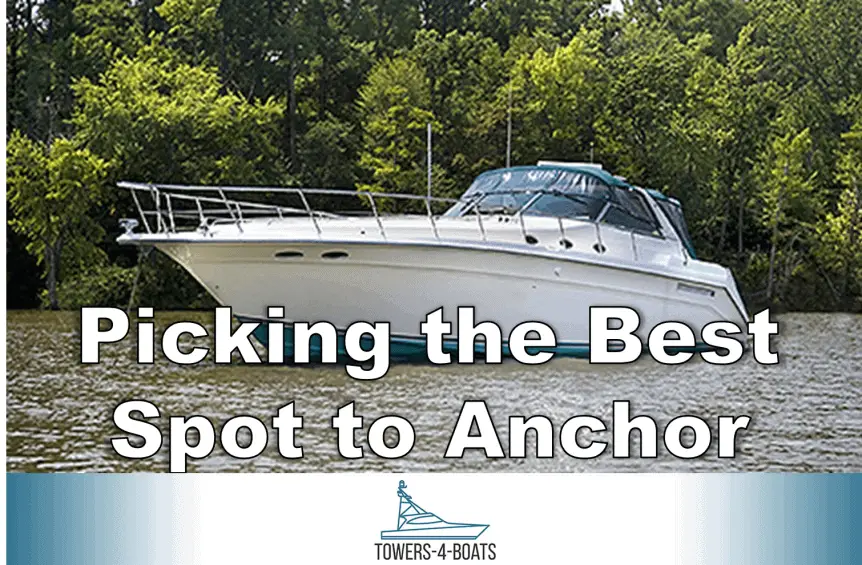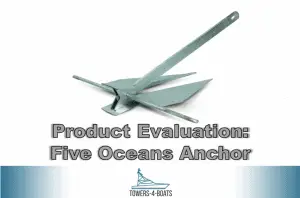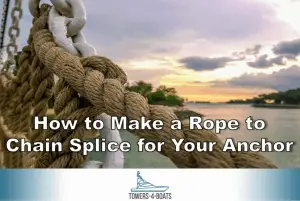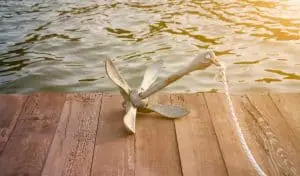Learn the Art of Anchoring Your Boat
Nothing makes successful anchoring easier than picking the right spot on your first try. From a distance, the pros make it look easy. You just pull up and drop the heavy thing in the water, right? But once you do it a few times, you’ll start to realize that there are all sorts of factors at play. You need to consider the wind and wave conditions, the weather forecast, and other boats in the area. Add to that the type of anchor to use, how much line to put out, and how you will swing when the wind changes, and your head may be spinning faster than your boat swings.
But with a little background and forethought, none of this is unsurmountable. In our previous article, we covered seven steps to dropping the hook in a new anchorage. Here we’ll look more closely at some of the factors you’ll want to consider as you pick a spot to anchor.
Picking the Best Spot to Anchor
Whether you are staying for a few hours or a few days, you’ll need to find the right spot to park your boat. But picking a spot on the ocean to stay awhile isn’t as easy as pulling into the garage.
Anchoring your boat can often be the best option. Perhaps there are no docks around, or all of the docks are full. Or perhaps the docks are exposed to the wind and waves, and you don’t want to risk your boat getting smashed up.
Picking your spot to drop the hook is probably the toughest part. The list of requirements for your perfect place seems endless. If it’s windy, you want to be close to land to reduce the wind. If it’s calm, you want to be farther from land to minimize the chances of visits from mosquitoes. If you have a pet on board, you want to be close enough to facilities to get them to shore. If there’s a party, you want to be close enough to get you to shore. You want it to be as shallow as possible, but not shallow enough to bump bottom in waves or when the tide goes out.
The Danger of the Lee Shore
The lee shore is the side of the coast where the wind is blowing from the water onto the land. Here, if your boat were disabled for any reason and you were unable to anchor or get moving again, you would wind up aground or beached. When anchoring, understanding the concept of the lee shore is extremely important.
Imagine you are boating on a large river that flows north to south, and a strong wind is coming from the east. There are good anchorages on the east and west banks. Which one do you choose?
The anchorage on the west side of the river has the wind blowing from the water to the land, and a significant wind-driven chop that will make staying on the boat uncomfortable. That’s the lee shore in this situation, and it should be avoided. On the eastern side, you can get close to land, the wind is calmer, and there are no waves at all.
Even if you aren’t expecting hazardous conditions, anchoring off of a lee shore is uncomfortable. You will be directly exposed to wind and waves. If one little thing goes wrong when anchoring, you are at the mercy of the elements. Alternatively, when anchored with land protecting you in a calm anchorage, the water is smooth, and if anything goes wrong, you have plenty of time to deal with it. The worst-case scenario is you drift into deeper water and farther from the land.
What Conditions are Forecast?
Picking an anchorage is all about knowing which way the wind is coming and figuring out where the lee shores are and where they are not. But an extra challenge comes in needing to know where the lee shores will be when the weather changes.
Even if you’re staying for only a few hours, the wind can shift 180 degrees due to diurnal land and sea breeze shifts. A good weather forecast is a must-have safety item. You don’t want to be caught at anchor should a cold front or strong storms roll through your area. Plan ahead and know what’s coming.
Picking an anchorage in calm weather that is not changing is easy — just anchor where ever you like.
But if the wind is blowing, you’ll want to find a protected spot out of the wind and waves — quiet coves or spots behind points of land work best. If you have the option, pick getting behind land that has higher terrain or high trees. This will create more protection from the wind, giving you a calmer anchorage.
Sometimes, if you know the wind is going to shift and pick up later, you might want to pick an anchorage that is less than ideal, to begin with, but gets better as the wind shifts as forecast. Or, you can move anchorages when the one you’re in gets uncomfortable. The key is to have a plan going in and to avoid unpleasant surprises.
Other Boats
Most problems that arise when anchoring are static. They’re easy to define and figure out. But other boats present a challenge, especially in a busy anchorage. You don’t want to be too close to them. Not only must you pay attention to the position of the other boats and how they are riding in the wind, but you must visualize where their anchors and anchor lines are. Always try to anchor behind other boats to avoid fouling their anchor with your own.
Remember that their anchors extend several boat lengths ahead of their positions. And remember, when you play out your anchor line, your anchor will be several boat lengths in front of you. You have to space yourself apart from other boats in a crowded anchorage with this in mind.
In light winds, it’s relatively easy to see where the boats are anchored and where their anchors are. Calm winds create a different situation. Boats will drift every which direction, and you’ll have no idea where their anchor lines are on the bottom. The same situation occurs in anchorages, where a strong current is present.
Wind Shifts
Crowded anchorages get even more exciting when the wind shifts. Now, instead of imagining straight lines along the bottom from their anchor to the boat, you need to image an arc (or even a complete circle) that swings around the position of the anchor. Generally, all boats will swing together, so this is easy to see. But some types of boat swing very differently. Catamarans often swing back and forth wildly at anchor, as do very tall powerboats with lots of windage. Trawlers and sailboats tend to ride more steadily. A boat with a nylon anchor line will swing differently than a boat using all chain. In short, the best policy is to give yourself and everyone else lots of space.
If you’re anchoring in a crowded spot and the wind is increasing, never put too much faith into the anchoring skills or equipment of your fellow boaters. While maintaining your own anchor watch, keep an eye on the boats around you. Keep a very careful eye if any boats are anchored in front of you.
Multiple Anchors
How other boats are anchored plays a huge factor in your anchoring strategy. Are they riding on one anchor or two? If a boat has two anchors out, it will not swing in a circle like a boat with one anchor. If there is one boat in an anchorage with two anchors out, while everyone else has one anchor out, the guy on two anchors is liable to get smacked into when the wind shifts. As the wind shifts, everyone else swings around their anchor except that guy. Don’t be that guy. And don’t be the guy that smacks into that guy.
Mooring balls create the same problem. When in doubt, give extra space to boats tied to moorings or boats on two anchors.
We’ll cover using two anchors in a future article, but it is rarely necessary.
Give Yourself Lots of Space
If the anchorage isn’t crowded, there is no reason to anchor near other vessels at all. If you are arriving at a quiet anchorage, and there are only one or two other boats, just anchor on the other side of the anchorage. More often than not, you are anchoring out for peace and solitude. The last thing you want is to worry about fouled anchors and tangled anchor lines.
Conclusion
Picking a spot to anchor, whether for a few hours, overnight, or for weeks at a time, isn’t all that challenging. Like many things, practice makes perfect, or at least pretty good.
Anchoring is a fun way to explore new shorelines away from the hustle and bustle of civilization. But it’s also a great way to explore towns along the way while saving money on docks. By camping on board, even the smallest boats can make great cruising vessels with a little creativity and adventurousness. Along the way, don’t let crowded anchorages scare you off, but it’s nice to have a plan and to know what you’re getting into.




